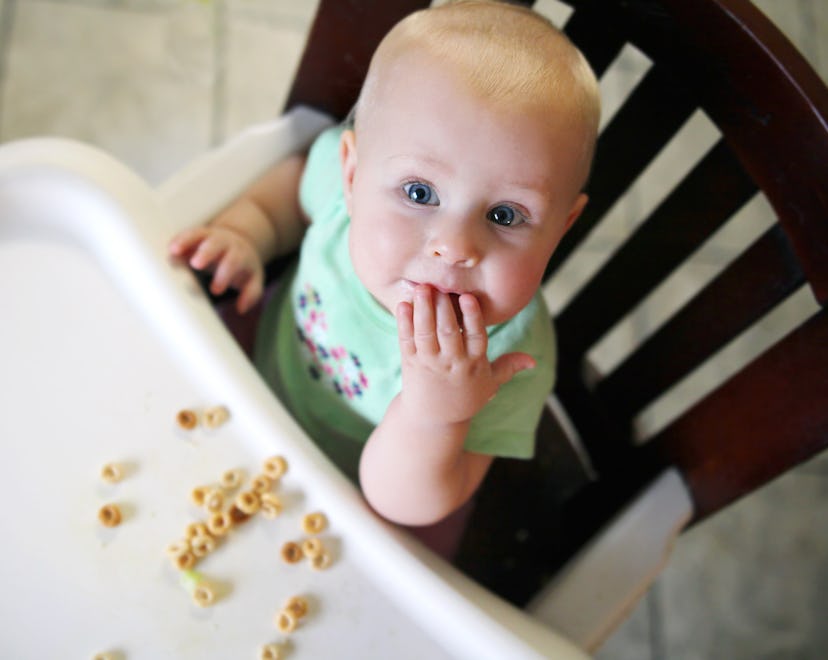Food
When Can Babies Eat Cheerios?
It’s all about skill building.
Cheerios are a baby rite of passage. I have photos of both my kids sitting in their high chairs working on their first tray full of the popular cereal. It's one of the most adorable baby tricks, figuring out how to get those little pieces of cereal into their mouths with those chubby little fingers. However, it can be tricky to figure out when they're ready for this milestone, because Cheerios are technically hard, but also dissolve relatively quickly once they make it into your mouth. So how do you know when when your baby is ready for Cheerios?
When can babies eat Cheerios?
Babies can eat Cheerios when they have mastered the pincer grasp, can chew, and have the ability to sit without support. Because of all this, they’re not a good first food, but you’ll be tossing handfuls of the classic toddler favorite onto their tray in no time.
“I’m putting an ‘O’ cereal on their tray when I’m seeing them pick up things with two fingers,” explains Dr. Natasha Burgert, a pediatrician and American Academy of Pediatrics spokesperson. A true “pincer grasp” means that Baby is using just the tips of their fingers to pick food up, which most kids can't do by 9 months, she explains. However, they don’t have to have mastered that skill to be able to eat ‘O’ cereal. If they can pick up a food with two fingers — using what Burgert calls an “incomplete pincer” — they’re ready for ‘O’ cereals. Typically, this happens around 9 months of age, she adds, though every baby will develop at a slightly different pace and it’s always a great idea to check in with your pediatrician.
“If we see them grabbing with two fingers, then that's when we start doing Cheerios or puffs,” Burgert says. “That’s when I tell parents they can start getting away from purées.” What pediatricians really want parents to do, she says, is to encourage Baby to go at their own pace, and discover food and eating with a sense of “a lot of joy and positive feedback, and having good experiences with those first foods and tastes.”
If you're eyeing the Cheerio box and wondering when you can crack it open for your baby, make sure she's hitting these milestones well on her own before you offer a selection of whole grain treats.
Expert:
Dr. Natasha Burgert, pediatrician and American Academy of Pediatrics spokesperson
This article was originally published on
